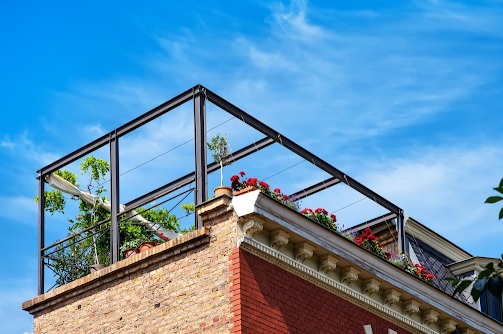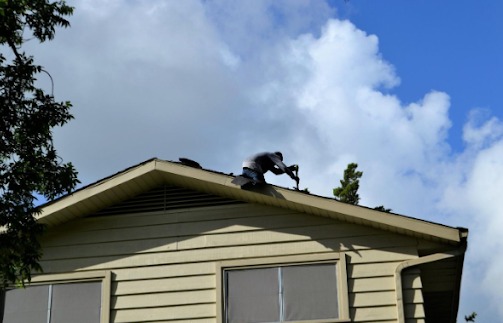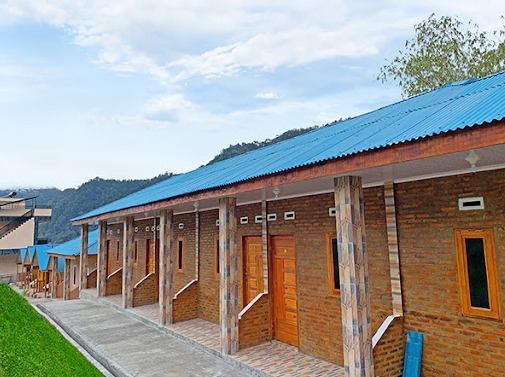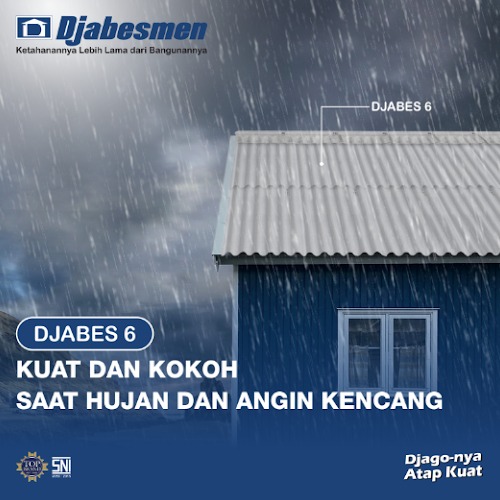Understanding the Causes of Rusty Roofs

Various causes of rusty roofs not only mar the beauty of a house’s top but also indicate potential serious structural issues. Rust is the result of an oxidation process that occurs when metal reacts with oxygen and humidity in the air.
This is a common phenomenon on house roofs, especially in areas with extreme weather or high humidity.
Understanding the reasons for this rust formation is the first step before taking effective preventive or maintenance actions to keep the roof strong and visually appealing.
What Are the 7 Causes of Roof Rust?
Typically, rust can develop due to roof conditions, exposure to weather elements, humidity, and specific chemical factors. Here’s the comprehensive explanation:
- Low-Quality Roofing Material
A primary cause of roof rust is the utilization of subpar materials. Inferior materials commonly lack a proper protective layer against rust, resulting in swift deterioration.
Moreover, economical metals often contain impurities that readily react with oxygen and water. In the absence of an adequate anti-rust covering, these materials can quickly succumb to rust, particularly when exposed to weather conditions.
This scenario can unfold with diverse material types, spanning from lightweight steel to galvalume.
- Roof’s Optimal Lifespan Has Passed
Older roofs are more prone to rust. The longer a roof ages, the higher the risk of rust. This is because the protective layer on the roof can deteriorate over time, especially if it has gone beyond its recommended lifespan.
- Roof Deterioration Due to Work Equipment
Roofs that are impacted by work equipment, such as during maintenance, could suffer from scratches or other types of harm. These marks or other physical impairments on the roof can eliminate the rust-resistant coating, exposing the metal to air and moisture.
This is a common situation when incorrect tools are used during installation or repairs, like grinders, even on roofs that were initially shielded effectively.
- Roof Material Interaction with External Substances
When roof materials encounter foreign elements like soil and cement, the protective layer can be damaged. These elements can react with the roof material and cause rusty roofs.
Additionally, exposure to chemicals like strong cleaners or industrial pollutants can initiate chemical reactions with the metal, speeding up the oxidation process.
- Roof Exposure to Cement Fluid
When liquid cement adheres to the roof, it can compromise the rust-resistant layer. This occurs because cement contains alkaline chemicals that can react with the roof’s metal.
This often takes place during construction or renovation activities. If the roof remains exposed to liquid cement for a prolonged duration, it can wear away the protective roof layer and result in rust.
- Impact of Weather Conditions or Surrounding Environment
Aspects of the environment, like elevated humidity, airborne salt content (particularly in coastal regions), or acid pollution, can collaborate in causing roof deterioration.
These factors have the potential to impair the roof’s protective layer and hasten the rust or oxidation process.
Selecting roof materials that match the environmental circumstances and adhering to regular maintenance is the most effective strategy to tackle this concern. For instance, if you reside in a coastal area, consider materials that can withstand salt exposure.
- Influence of Air Humidity or Moisture
High humidity, particularly in tropical areas, can cause rusty roofs. Accumulated water on the roof can also deteriorate the anti-corrosion coating. This is because water acts as an electrolyte, enabling the oxidation process to occur.
This situation can arise due to poor drainage systems or the accumulation of leaves that block the water flow. Proper drainage, ventilation, and the use of water-resistant materials can aid in preventing this issue.
How to Prevent and Maintain Rust-Free Roofs
There are numerous steps you can take to prevent the causes of rusty roofs and to maintain a roof that is free from this issue. Some of these include:
- Regular Roof Repainting
Giving your roof a fresh coat of paint on a regular basis is one of the most effective ways to prevent rust. The paint forms a protective layer that shields the metal from direct contact with oxygen and water.
This is important because oxygen and water are the main culprits behind rust formation. Repainting should be done periodically, depending on the weather and the environment you’re in, to ensure that the protective layer remains intact.
- Employ Acidic Materials
Using materials that contain acids, like vinegar, can be helpful in removing existing rust. The acid present in vinegar will react with the rust and facilitate its removal from the metal surface.
Nevertheless, it’s essential to exercise caution and follow the usage guidelines when using acids, as excessive strength can potentially harm metal roofs.
- Opt for Tin-Based Coatings
Choosing coatings that are composed of tin presents an alternative approach to shield the roof against rust. Tin doesn’t undergo the same type of oxygen reaction as numerous other metals do, enabling it to establish a highly effective protective layer.
It’s crucial to have these coatings applied by experts to ensure proper bonding and to achieve optimal protection.
- Coat with Oil or Grease
Coating your roof with oil or grease can serve as a protective measure against moisture, a leading cause of rust.
The oil or grease forms a layer that repels water, preventing it from interacting with the metal. This proves to be a viable remedy, especially for roofs situated in regions with elevated humidity.
- Refrain from Grinder Usage During Roof Cutting
Using grinders during roof cutting can create sparks that remove the anti-corrosion coating.
This can be the cause rust on the affected areas and its subsequent spread. Therefore, employ the appropriate cutting tools and techniques to help prevent this issue.
- Ensure the Use of Appropriate and Compatible Screws
Employing incorrect or mismatched screws for your roofing material can initiate chemical responses that result in rust formation.
Hence, it’s essential to choose screws that match both the type and material of your roof, ensuring prevention of these reactions. Seek advice from professionals or roofing material suppliers for assistance in selecting the appropriate screws.
- Maintain Distance Between Roof and Water or Cement Mixture
As mentioned earlier, water and cement mixture can create a reaction with metal, resulting in rust.
Consequently, when undertaking construction or renovation work, it’s essential to prevent the roof from coming into contact with water or cement mix. If any contact does occur, promptly clean the affected area to prevent rust development.
That concludes the comprehensive explanation about the 7 causes of rust on roofs and the solutions to prevent and maintain them. By understanding the root causes of roof issues, you can take appropriate proactive measures to ensure your roof remains rust-free and strong.
If you’re searching for a durable and rust-resistant roofing option, consider using Djabesmen products like fiber cement roofs. Djabesmen offers 4 types of fiber cement roofs, all guaranteed to be rust-free. Each roof type can also be tailored to your construction needs.
Visit this page to find out more about these quality products that will safeguard your home’s roof from rust!

Djabesmen Regains Top Brand No.1 Award for the Tenth Time
Djabesmen Won Top Brand Award
Read Post arrow_right_alt

Tips for Creating a Rooftop Garden
Planning to create a rooftop garden? Discover these valuable tips to elevate its charm and allure!
Read Post arrow_right_alt

Roof Repair Solutions for Urgent Situations
Here are some tips and emergency roof repair techniques that you can implement in critical conditions.
Read Post arrow_right_alt

Here are the Reasons Why Roofs Are Made with Corrugations
Why are roofs made with corrugations? Learn about its rationale and various benefits!
Read Post arrow_right_alt












